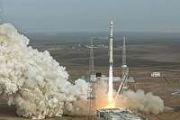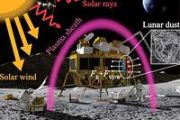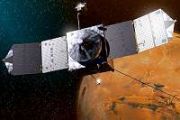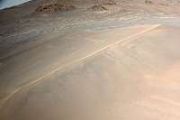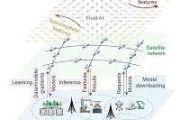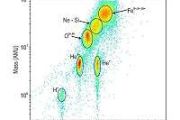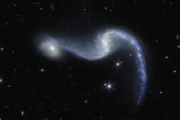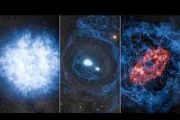
Copernical Team
Is Fusion Energy Becoming the Space Race of This Century
 Encouraged by the potential of clean, continuous, high-density power, commercial investment in fusion energy has grown to more than US$9.6 billion over the last five years, according to IDTechEx analysis.
Around 50 startups have now emerged worldwide, spurred by progress in experimental reactors and aiming to bring fusion into the commercial domain. IDTechEx's new report, Fusion Energy Mar
Encouraged by the potential of clean, continuous, high-density power, commercial investment in fusion energy has grown to more than US$9.6 billion over the last five years, according to IDTechEx analysis.
Around 50 startups have now emerged worldwide, spurred by progress in experimental reactors and aiming to bring fusion into the commercial domain. IDTechEx's new report, Fusion Energy Mar PREFIRE CubeSats to operate through 2026 as mission expands worldwide
 NASA has extended the PREFIRE mission through September 2026 and broadened its scope from the poles to the entire planet. The twin shoebox-size CubeSats measure how water vapor, clouds, and other components of Earths system trap heat, improving forecasts of storm frequency and intensity.
Launched in spring 2024, PREFIRE has been quantifying how much heat escapes to space from the Arctic an
NASA has extended the PREFIRE mission through September 2026 and broadened its scope from the poles to the entire planet. The twin shoebox-size CubeSats measure how water vapor, clouds, and other components of Earths system trap heat, improving forecasts of storm frequency and intensity.
Launched in spring 2024, PREFIRE has been quantifying how much heat escapes to space from the Arctic an SwRI unveils spacecraft impact detection system for orbital debris
 Southwest Research Institute (SwRI) has created and tested a micrometeoroid and orbital debris (MMOD) detection system to help satellites and spacecraft identify and characterize debris impacts. The technology ensures operators are aware of collisions even when damage is not immediately visible.
Earth's orbital environment is increasingly congested due to exploding satellites, anti-satelli
Southwest Research Institute (SwRI) has created and tested a micrometeoroid and orbital debris (MMOD) detection system to help satellites and spacecraft identify and characterize debris impacts. The technology ensures operators are aware of collisions even when damage is not immediately visible.
Earth's orbital environment is increasingly congested due to exploding satellites, anti-satelli Nullspace secures 25M seed funding to advance RF and quantum simulation software
 Nullspace, a deep tech company creating next-generation electromagnetic simulation software, has raised $2.5 million in seed financing. The round was led by Fathom Fund with participation from Golden Seeds LLC and several strategic angel investors. The capital will support expansion of the engineering team, faster product development, and commercial scaling across aerospace, defense, quantum com
Nullspace, a deep tech company creating next-generation electromagnetic simulation software, has raised $2.5 million in seed financing. The round was led by Fathom Fund with participation from Golden Seeds LLC and several strategic angel investors. The capital will support expansion of the engineering team, faster product development, and commercial scaling across aerospace, defense, quantum com Voyager invests in Latent AI to advance real time space based intelligence
 Voyager Technologies has announced an investment in Latent AI, a specialist in edge-based artificial intelligence that enables data to be processed and acted upon in real time. The collaboration will bring advanced AI processing to orbit and other contested environments where connectivity is limited.
"AI is transforming the edge from a passive collector to an active combat multiplier," sta
Voyager Technologies has announced an investment in Latent AI, a specialist in edge-based artificial intelligence that enables data to be processed and acted upon in real time. The collaboration will bring advanced AI processing to orbit and other contested environments where connectivity is limited.
"AI is transforming the edge from a passive collector to an active combat multiplier," sta Global Invacom launches modular auto deploy XY antenna for multi orbit mission critical networks
 Global Skyware, a unit of Global Invacom Group, has introduced the XY antenna, a field-ready platform engineered for rapid response operations. The system emphasizes modularity, flexibility and fast assembly, supporting both on-the-move and on-the-pause scenarios where dependable connectivity is essential.
The XY delivers multi-orbit support across Geostationary Earth Orbit (GEO), Low Eart
Global Skyware, a unit of Global Invacom Group, has introduced the XY antenna, a field-ready platform engineered for rapid response operations. The system emphasizes modularity, flexibility and fast assembly, supporting both on-the-move and on-the-pause scenarios where dependable connectivity is essential.
The XY delivers multi-orbit support across Geostationary Earth Orbit (GEO), Low Eart Supernovae: How to spot them at record speed
 Supernovae appear to our eyes-and to astronomical instruments-as brilliant flashes that flare up in the sky without warning, in places where nothing was visible just moments before. The flash is caused by the colossal explosion of a star. Because supernovae are sudden and unpredictable, they have long been difficult to study, but today, thanks to extensive, continuous, high-cadence sky surveys,
Supernovae appear to our eyes-and to astronomical instruments-as brilliant flashes that flare up in the sky without warning, in places where nothing was visible just moments before. The flash is caused by the colossal explosion of a star. Because supernovae are sudden and unpredictable, they have long been difficult to study, but today, thanks to extensive, continuous, high-cadence sky surveys, Early detection methods refine study of stellar explosions
 Supernovae are sudden stellar explosions that flare brightly in the sky, making them difficult to capture in their earliest moments. With modern wide-field, high-cadence sky surveys, astronomers can now spot these events almost daily, but protocols are needed to secure immediate follow-up data.
A pilot study led by Lluis Galbany of the Institute of Space Sciences (ICE-CSIC) in Barcelona te
Supernovae are sudden stellar explosions that flare brightly in the sky, making them difficult to capture in their earliest moments. With modern wide-field, high-cadence sky surveys, astronomers can now spot these events almost daily, but protocols are needed to secure immediate follow-up data.
A pilot study led by Lluis Galbany of the Institute of Space Sciences (ICE-CSIC) in Barcelona te New model shows how collapsing matter and voids shape cosmic evolution
 A University of Queensland researcher has developed a mathematical framework that incorporates collapsing regions of matter and expanding cosmic voids to explain the universe's evolution in greater detail than the standard model allows.
Dr Leonardo Giani and colleagues used data from the Dark Energy Spectroscopic Instrument (DESI), which measures the structure of the universe across distan
A University of Queensland researcher has developed a mathematical framework that incorporates collapsing regions of matter and expanding cosmic voids to explain the universe's evolution in greater detail than the standard model allows.
Dr Leonardo Giani and colleagues used data from the Dark Energy Spectroscopic Instrument (DESI), which measures the structure of the universe across distan Webb telescope discovers a new Uranus moon
 NASA scientists at the Southwest Research Institute discovered a 29th moon orbiting Uranus while using infrared detection through the James Webb Space Telescope.
The discovery was made on Feb. 2, but NASA officials did not announce the discovery until Tuesday in a news release.
"This object was spotted in a series of 10 40-minute long-exposure images captured by the Near-Infrared
NASA scientists at the Southwest Research Institute discovered a 29th moon orbiting Uranus while using infrared detection through the James Webb Space Telescope.
The discovery was made on Feb. 2, but NASA officials did not announce the discovery until Tuesday in a news release.
"This object was spotted in a series of 10 40-minute long-exposure images captured by the Near-Infrared 



